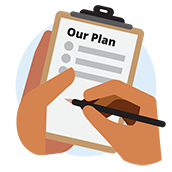Advice for disabled people and people with health conditions
What you will find on here
About this page
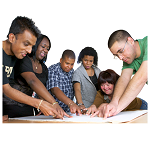
It is important to get ready for emergencies.
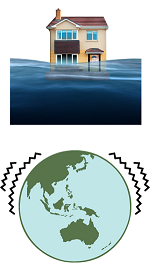
Emergencies are things like:
- floods
- earthquakes
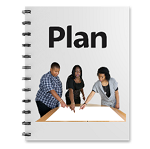
There are some things disabled people need to plan for when it comes to emergencies.
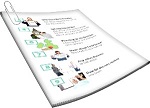
This page is about how to get ready.
Think about what things will be like

If there is an emergency, services like ambulances will be busy helping the people who need them most.
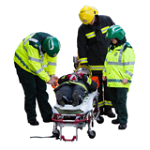
For example, they need to look after people who are badly injured.

You need to be ready to manage without them for 3 days or more.
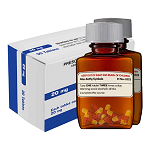
This can mean things like having enough medicine to last you.

The power may be out for 3 days or more.
You may have things you need that use power like:
- an electric hoist to move you out of bed
- a wheelchair you need to charge.

If you need power for things like this you need to think about ways to keep them working when the power goes off.
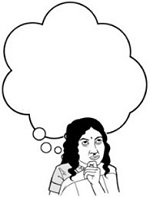
Think about what things would be like for you in an emergency.

Think about what you will do if:
- roads are closed
- shops are closed
- you have to leave home quickly
- there is no:
- power
- water
- phone
- internet

Talk with:
- the people you live with
- other people who support you.
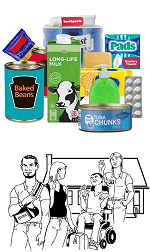
Talk about:
- things you need like food or medicine
- what support you need
- where you will go if you cannot stay at home.
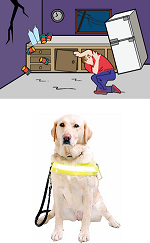
Think about what you will do if:
- things have moved around
- things have broken
- your service animal is hurt or too scared to move
- landmarks are not there any more.
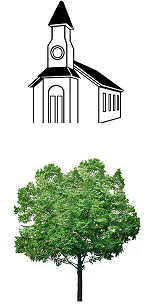
Landmarks are things you use to know where you are.
A landmark could be something like:
- a building
- a big tree at the end of your road.
Make a plan

Make a plan for what to do in an emergency.
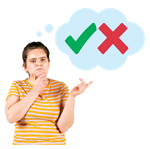
You should decide:
- what you will be able to do yourself
- what you will need support with.
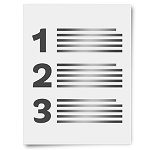
Make a list of:
- the needs you have
- things you have that can meet those needs.
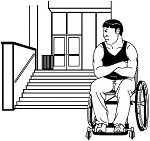
Remember an emergency can make it harder for you to do things.
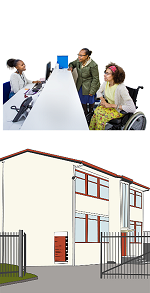
Make sure you know the emergency plans for places where you spend a lot of time like your:
- work
- school.
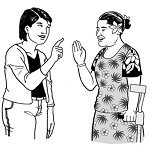
If places do not have plans for disabled people make sure the people in charge know what you need.
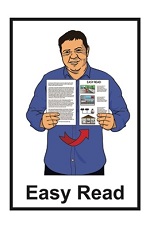
You can find an Easy Read guide to making a plan at the webpage called:
Build a support network
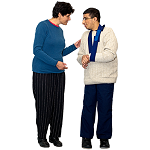
You need to build a support network before an emergency happens.

A support network means people who may be able to support you in different ways when you need it.
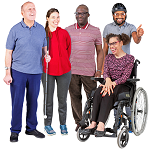
Your support network will mostly be people who are often in the same place as you like:
- neighbours
- friends
- people you work with.
You need more than 1 person to be part of your support network.
Try to have a support team at each place you spend a lot of the day.
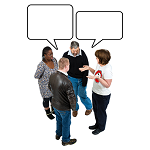
Talk with them about your emergency plan.

Your support network can assist you to get ready for an emergency.

For example they can check your home to make sure it is safe for you.
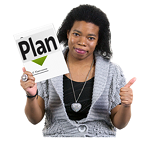
Practise your plan with your support network.
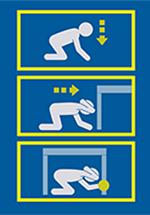
Think about how you will drop cover and hold in an earthquake.
Drop cover and hold is what you do with your body to protect yourself in an earthquake.
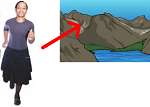
Think about how you will move to higher ground like a hillside if there is a tsunami or flood nearby.
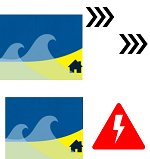
Tsunami are waves that can:
- travel very fast
- be very dangerous.
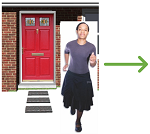
Ask your support network to check on you if you have to leave your home.

Agree how you will get in touch in an emergency.

Remember you may not be able to use the internet or phone.
Make sure you have supplies

In an emergency you may not be able to get the supplies you need as:
- roads may be closed
- shops may be closed.

Supplies are things like:
- food
- water
- medicine
- pet food
- batteries.

Make sure you have what you need for at least 3 days.
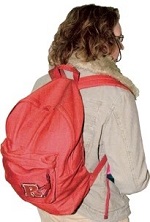
Have the most important things in a grab bag.
A grab bag is a bag you can quickly take with you if you need to leave.

If you have food allergies or cannot eat some kinds of food make sure you have extra food.
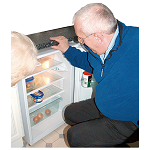
If your medicine needs to be in the fridge make sure you have a way to keep it cold if the power goes out.
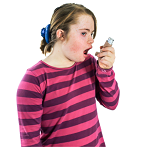
If you have a breathing condition like asthma make sure that in your grab bag you have:
- your inhaler
- face masks.
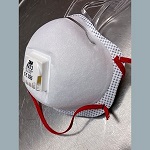
The masks should be the P2 or N95 kind.
This is because some emergencies cause a lot of dust in the air.

Wear a medic alert that says what your disability or health condition is.

If you are travelling / staying outside your home tell the person in charge of the place you are staying at what you will need in an emergency.
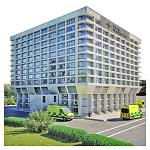
If you have medical equipment or treatment you need to live make sure you know where to go if it stops working in an emergency.
If you are Deaf or hard of hearing
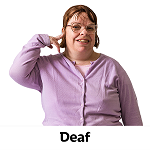
If you are Deaf or hard of hearing you need to plan for what an emergency will be like for you.
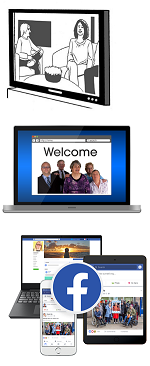
Make sure you have a way to get information in an emergency.
There will be information on:
- television
- the internet
- social media like Facebook.
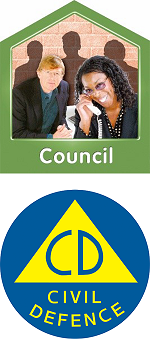
Find out what warnings are like where you live by contacting your:
- council
- Civil Defence Emergency Management Group.
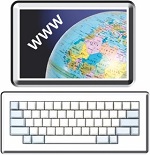
You can find a list of Civil Defence Emergency Management Groups at this website:

Tell your support network to get in touch with you if there is an emergency.
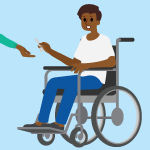
Give someone you trust who lives close to you a key to your house so they can alert you.
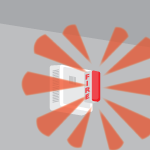
Get a warning system that works for you.
For example you can get a fire alarm that has flashing lights.
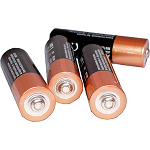
Make sure you change the batteries every year.

Put things in your grab bag that you can use to communicate like:
- pencils
- a notepad
- a torch with batteries.
If you are blind or low vision
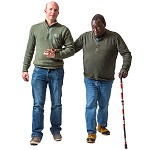
If you are blind or low vision you need to plan for what an emergency will be like for you.

You may need support from others if you have to leave your home.

Keep extra canes to use:
- at home
- where you work.
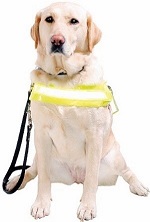
Even if you have a guide dog you may need a cane in an emergency.
This is because animals can get confused in an emergency.
Disability Assist Dogs
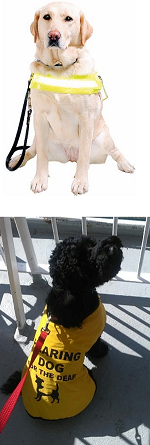
If you have a Disability Assist Dog like a guide dog make sure it is certified with an organisation like:
- Blind Low Vision New Zealand
- Hearing Dogs New Zealand
- Assistance Dogs New Zealand Trust.
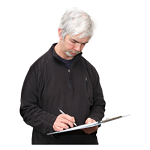
Certified means they have it on their list as a proper Disability Assist Dog.
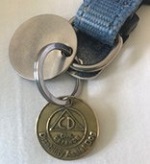
Get a Disability Assist Dog identification tag.
A Disability Assist Dog identification tag is something your dog wears to show it is a Disability Assist Dog.

Make sure your dog wears it all the time.
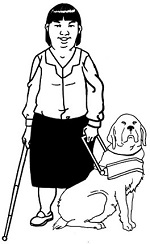
This tag means your Disability Assist Dog can stay in an emergency shelter with you.
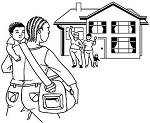
An emergency shelter is a place where people stay when they have had to leave their homes.

Have a grab bag for your dog with:
- food
- medicine
- records of vaccines your dog has had
- identification / ID
- harnesses.

Make sure your dog knows the people in your support network.

This will make it easier for your dog if someone else has to look after them.
How to get prepared for an emergency
Work out what you need to do to get your household, work, school or marae ready.

